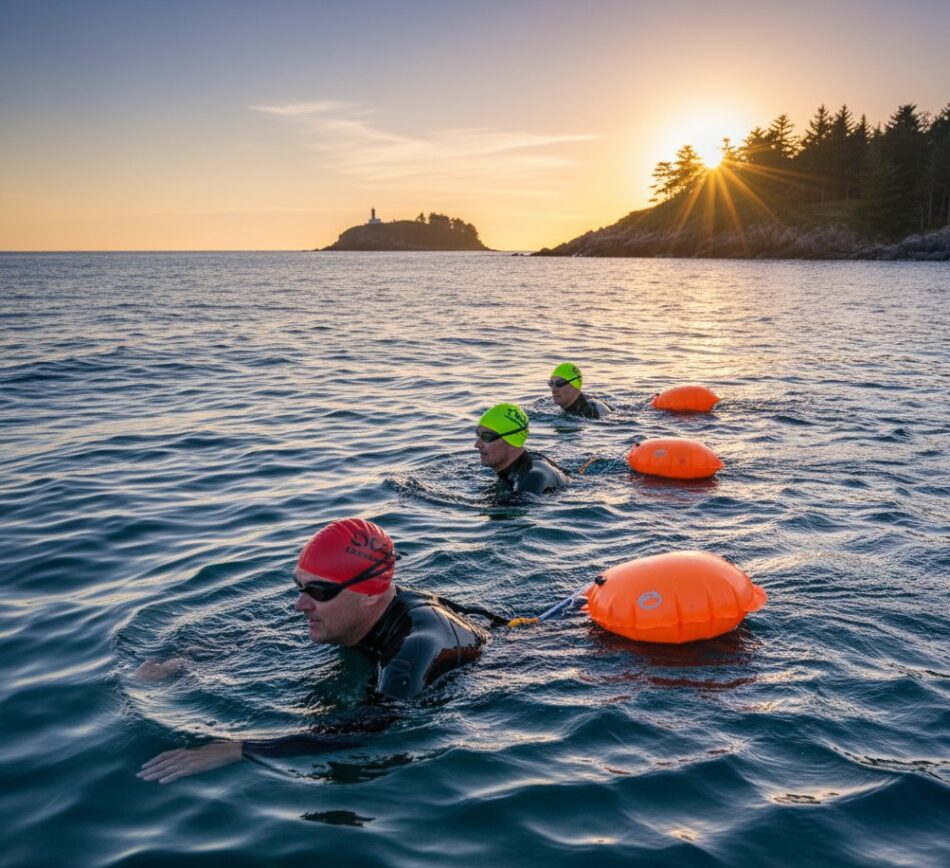Why You Should Start with the Backstroke
If you’re new to swimming, the backstroke is the perfect place to begin. Unlike freestyle or butterfly, you can breathe naturally, see the sky or ceiling, and focus on learning body control without fear of sinking.
Key benefits:
-
🧘♂️ Promotes relaxation and confidence in water
-
💪 Builds strong shoulders, core, and legs
-
🌬️ Encourages steady breathing and balance
-
🩱 Suitable for all ages and fitness levels
At LegendarySwimmers.com, we teach swimmers to connect movement with calm — the backstroke isn’t just a stroke; it’s a way to feel at peace in the water.
💧 Step-by-Step: How to Learn the Backstroke
1️⃣ Find Your Float
Before any movement, you must first trust the water.
-
Lie flat on your back and stretch your arms slightly outward.
-
Keep your hips high and your body relaxed.
-
Take deep, slow breaths.
Goal: Achieve balance and buoyancy. Floating builds confidence and is the foundation for smooth movement.
2️⃣ Perfect Your Kick
Your kick provides propulsion and stability.
-
Keep your legs straight but flexible.
-
Kick from your hips, not your knees.
-
Make small, fast, controlled movements.
Avoid splashing — efficiency beats power in backstroke kicking.
3️⃣ Add Arm Movement
Each arm moves like a paddle through the water.
-
Lift one arm straight up, rotate backward, and pull it down through the water.
-
As one arm enters, the other exits in a continuous, alternating motion.
-
Maintain a slight body rotation with each pull.
Pro Tip: Keep your arms straight during recovery and aligned with your shoulders.
4️⃣ Combine Rotation and Breathing
Backstroke is all about rhythm.
-
Rotate your shoulders and hips slightly as each arm moves.
-
Breathe naturally — inhale when one arm recovers, exhale as it enters the water.
-
Keep your head still, eyes looking straight up.
This creates a seamless, flowing movement that feels effortless once mastered.
🏋️♀️ Backstroke Drills to Build Skill and Strength
Practicing the right drills helps develop balance and rhythm faster.
🔹 Kickboard Drill
Hold a kickboard over your legs and focus on maintaining a straight body line. Perform gentle, quick flutter kicks to stay afloat.
🔹 Single Arm Drill
Swim using one arm while the other stays at your side. Switch arms every 25 meters to balance strength and technique.
🔹 6-Kick Switch Drill
Perform six kicks, then switch arms. This improves timing and coordination between your upper and lower body.
🔹 Sculling Drill
Float on your back and move your hands in small figure-eight patterns under the surface. This helps you “feel” the water and build balance.
🧘 Warm-Up Routine Before You Swim
Before getting into the pool, warm up your body for flexibility and control:
-
Arm Circles: 15–20 reps
-
Shoulder Rolls: 10 forward, 10 backward
-
Trunk Twists: 20 reps
-
Calf Raises: 20–25 reps
These exercises reduce tension and prepare your muscles for smooth, consistent strokes.
⚠️ Common Backstroke Mistakes (and How to Fix Them)
| Mistake | Fix |
|---|---|
| Hips sinking | Engage your core and keep your chin tucked slightly. |
| Splashy kicks | Focus on smaller, quicker movements from your hips. |
| Looking backward | Keep your eyes fixed on the ceiling or sky. |
| Uneven strokes | Alternate arm pulls evenly; count your rhythm. |
| Holding breath | Exhale slowly through your nose between strokes. |
Consistency in correction leads to smoother, faster improvement.
🌟 The Benefits of Practicing Backstroke
Swimming backstroke regularly helps both body and mind:
✅ Strengthens the upper body and core
✅ Improves posture and flexibility
✅ Boosts lung capacity and breathing rhythm
✅ Enhances body awareness and confidence
✅ Reduces stress through rhythmic movement
Backstroke gives you freedom — it’s not just about swimming fast; it’s about swimming calmly and confidently.
💬 Swimmer Insight
“Once I learned to float on my back, everything changed. I stopped fighting the water — and started enjoying it.”
That’s the spirit behind LegendarySwimmers.com — swimming isn’t just physical training, it’s mental peace, balance, and confidence.
❓ Frequently Asked Questions
Q1: Is the backstroke hard for beginners?
No! It’s one of the easiest strokes to learn since your face stays above the water.
Q2: Can I teach myself the backstroke?
Yes — with practice and simple drills, you can learn the basics at any local pool.
Q3: How can I swim straighter?
Focus on a fixed point above you (like a ceiling line or sky spot) to maintain direction.
Q4: Should I use fins or a snorkel?
Short fins can help improve your kick technique; a snorkel helps beginners stay relaxed.
🏁 Final Thoughts
Learning the backstroke is more than just swimming — it’s about finding confidence, rhythm, and calm in the water.
Start small. Float. Breathe. Kick. Rotate.
Soon, you’ll glide across the pool effortlessly, free from tension or fear.
Every stroke you take brings you closer to mastering not just swimming — but your own sense of control and freedom. 🌊







